
Vatican City, Feb 16, 2018 / 11:24 am (CNA/EWTN News).- Ahead of the pre-synod meeting set to take place next month, several young participants voiced excitement to meet with peers from all over the world to exchange ideas and talk about life’s major questions.
“This is a step the Church is making to listen to all youth,” said Stella Marilene Nishimwe, a participant in the pre-synod gathering. “It will give us an opportunity to say everything that we think. This is an opportunity that we must really take.”
A young Burundi woman living in Italy, Nishimwe told journalists that she believes the March gathering is “something that God wants from the Church, to do something new for all the youth of the world.”
“Because youth from all over the world, whether they are Catholics or from other religions, we have the same questions,” she said, adding that she thinks it is important that the Church wants to walk with youth “in this world with so much pain, with so many questions that don’t have answers.”
She said that what she mainly wants to share is the experience of “the life that we live.” Namely, “we want to find happiness, like everyone in the world, we want to live in unity, we want to feel at home in all parts of the world. We want to really find a path together…in this synod, I really want this.”
Nishimwe was one of four panelists at a Feb. 16 news conference on the upcoming pre-synod meeting, which will be held March 19-24 in Rome with some 300 youth from various backgrounds and countries throughout the world.
The event is a precursor to the October Synod of Bishops on “Faith, Young People and the Discernment of Vocation,” and will include youth in different states of life and from different vocations. Priests, seminarians and consecrated persons will also participate, as well as non-Catholics.
Special attention will also be given to youth from both global and existential “peripheries,” including people with disabilities, and some who have struggled with drug use or who have been in prison.
At the end of the gathering, notes of the various discussions will be gathered into one comprehensive concluding document, which will be presented to Pope Francis and used as part of the “Instrumentum Laboris,” or “working document,” of the October synod.
Alongside Nishimwe at the news conference were Cardinal Lorenzo Baldisseri, secretary general of the Synod of Bishops; Bishop Fabio Fabene, the synod dicastery’s undersecretary; and Italian youth Filippo Passantino.
In comments to journalists, Passantino said participants are expecting to hear “an echo of their requests, of their needs, of their proposals” in the meeting, not only in the synod hall, “but also on social media, so that social media can become [a] great and luminous reflection to shine on their problems.”
Social media will also play a key role in the pre-synod gathering, which is being promoted on various platforms such as Facebook and Twitter with 15 special hashtags.
Passantino, who has helped to promote the event on social media, said many young people have shared their experiences, and that so far, most of the testimonies and questions posted have been related to problems such as finding work and building meaningful relationships in an increasingly superficial world.
He stressed the importance of youth being able to listen to one another and share their experiences, saying that “we will be listened to, but we must and we want to listen to all those situations of difficulty.”
The pre-synod meeting will kick off Monday, March 19, with an audience with Pope Francis, marking the 5th anniversary of the start of his papal ministry. True to form, Francis during the audience will take questions from young people from all five continents.
In the afternoon, participants will be divided into language groups, which throughout the week will discuss different themes outlined in the preparatory document for the synod, which was released Jan. 13, 2017.
Each session will include five questions to help guide discussion. The questions will focus on various topics, such as the search for meaning, technology, vocational discernment, politics and volunteer work.
Entertainment and moments of prayer will also be included. On Friday, April 23, participants will pray the Way of the Cross while walking to the Roman catacombs of San Callisto. On Saturday, they will spend the morning at the Pontifical Villa in Castel Gandolfo and in the evening will have a celebration with youth from the Diocese of Albano.
The event will conclude with Palm Sunday Mass celebrated by Pope Francis in St. Peter’s Square, which also marks the diocesan celebration of World Youth Day, this year dedicated to the theme: “Do not be afraid Mary, for you have found favor with God.”
Participants in the gathering were selected by local bishops conferences for both the Roman and Eastern rites, and for those involved in movements, associations and ecclesial movements. Students at Catholic schools and universities will also attend.
In comments to journalists, Cardinal Baldisseri said the pre-synod gathering is not “an isolated event,” but is rather “a phase on the journey of preparation for the Synod of Bishops in October.”
The first step was the questionnaire that was sent out to bishops’ conferences worldwide, and which was also posted online in order to make it more accessible to young people. It was released in June 2017 for people ages 16 to 29, of all faiths and backgrounds, asking about lives, attitudes and concerns about the world.
According to Baldisseri, some 221,000 youth participated, with the majority being in the younger age bracket. Europe was the continent most highly represented, with Central and South America coming in second, and Africa in third.
The answers to the questionnaire will be one of four key ingredients in the October synod, he said, with the other three being the website for the questionnaire and social media accounts where youth can leave testimonies and answer questions; a September 2017 seminar on youth that took place in Rome; and the final document of the pre-synod meeting.
The pre-synod gathering will be “very, very important for the synod,” Baldisseri said. It aims to ensure that young people are heard and understood, so that the synod is not just an event “about” youth, but “with” them.
The meeting will seek to define specific pastoral projects and outreach plans. Parents, educators and priests will also be present to listen to what the youth are saying and be better equipped to address the problems and situations they encounter.
An exchange of cultural experiences and different religious backgrounds will also be encouraged.
In order to help young people unable to participate in the Rome gathering to have a voice in the discussion, special Facebook groups have been created based on language, which Bishop Baldisseri said will allow those not present to follow the discussion and interact with their peers from around the world.
Links to all social media pages, as well as the hashtags that will be used, can be found on the synod website: www.synod2018.va
 […]
[…]







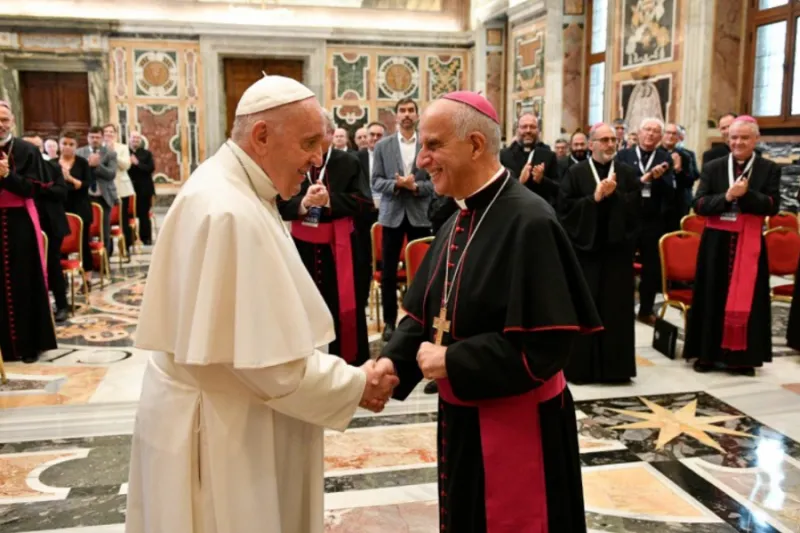
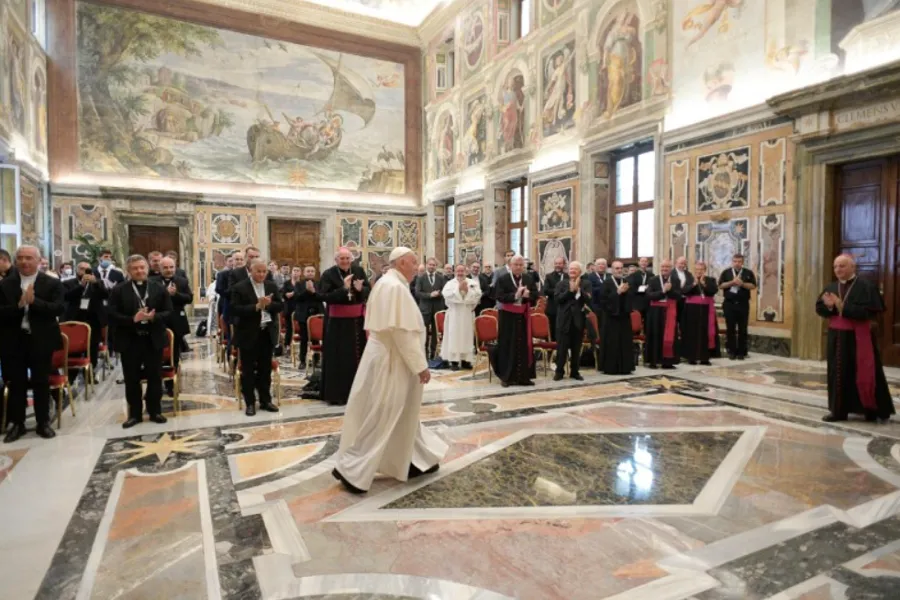
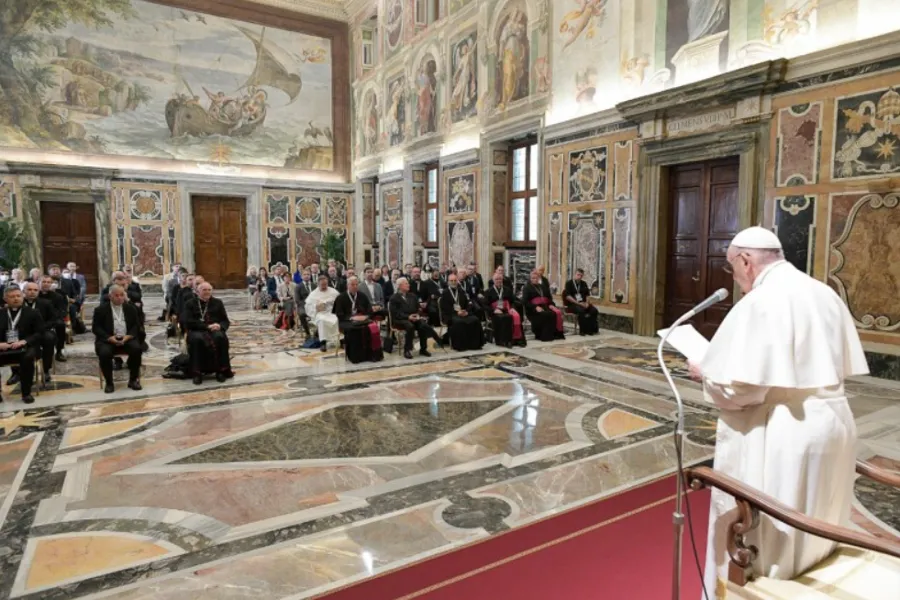
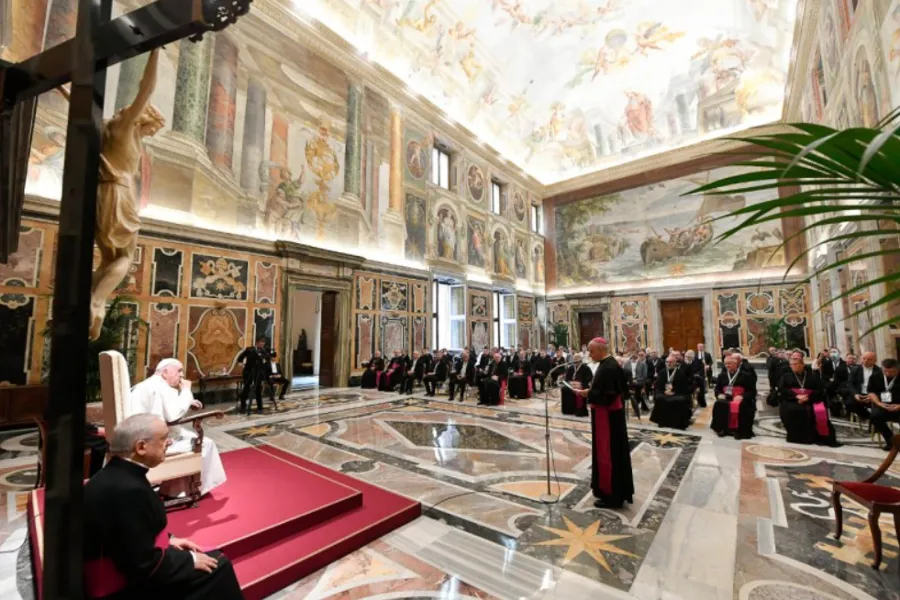
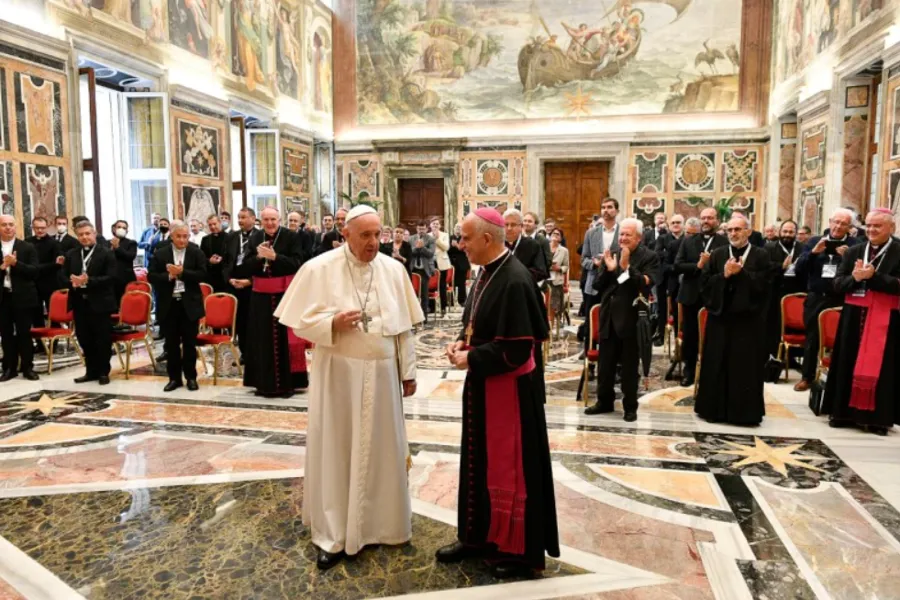
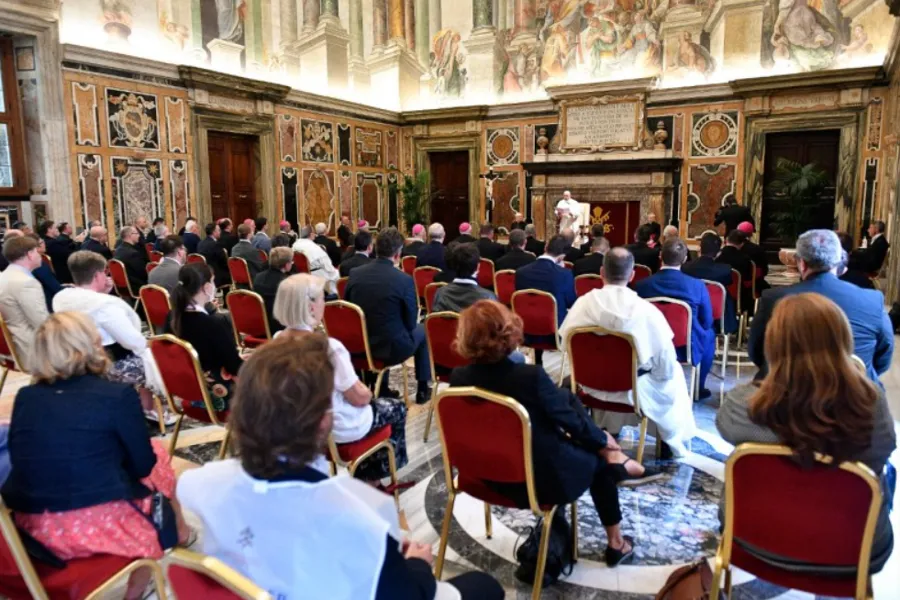
Nothing appears set in stone to this Jesuit. Where does he get his inspirations? Perhaps Tucho should sit down with him for a bit of probing.
Look. Let’s be honest.
If Rupnik is acceptable priestly material — as Bergoglio’s acquiescence indicates he clearly is— then who isn’t?
Women? I say, bring ‘em on!
Illegal immigrants? Why not?
High school dropouts? Home remodeling contractors? Attorneys? Professional sports figures?
On what basis can we say no to anyone, so long as Rupnik remains a clergyman in good standing?
And, thus, Hollerich’s and Bergoglio’s ‘New Catholique Church’ lurches inexorably — indeed, progressively — into its post-Christian future.
I.e., the past.
Briney. There you go again. Dispagaging women. “Women? I say, bring ‘em on!
Illegal immigrants? Why not?”. Holy Catholic women??? Walk in their shoes!
He wasn’t disparaging women. Clue in.
More code language of gradualism from the clericalist Hollerich!
The contrived question before the study groups and the Synod is about female deacons. But, Hollerich, in counseling small steps, already maneuvers much more broadly. Says he: “…we will also work toward this. I don’t know if that necessarily has to include ordination to the priesthood. You can’t tie everything to the priesthood alone. That would be clericalization.”
The endgame of a female priesthood already waiting in the wing?
Such that the cover story for ordained deaconesses, itself, is the small-step already—on the path to an equally invalid female “priesthood”? Two points of clarification:
FIRST, the historical documentation does support an ordained role for so-called deaconesses. Instead, the ordained diaconate is an integral part of the threefold ordination established by Jesus Christ: bishops and priests, and their deacons. It’s neither culturally based nor separable. Moreover, the role of Lay Ecclesial Ministers exists already (!), by virtue of their baptism and confirmation.
SECOND, in his view of things male and female, why does the perplexed Hollerich remind us of the Anglican chauvinist cleric in the movie “Shadowlands”? The clericalist explains menfolk as intelligent versus womenfolk as only emotional. The “feeling” thingy…
As he dialogues (!) with C.S. Lewis’ new American friend, Joy Gresham (played by Debra Winger), Gresham first allows that different cultures might “have different manners of discourse”—and then wonders aloud: “Are you trying to be offensive, or merely stupid?”
Hollerich’s patronizing theology: “I am in favor of women feeling [!] fully equal in the Church.”
said the prohibition against ordaining women was “not an infallible doctrinal decision” and could be changed over time with arguments.(sic)
Incorrect, Jean-Claude, you goofy Jesuit.
Wherefore, in order that all doubt may be removed regarding a matter of great importance, a matter which pertains to the Church’s divine constitution itself, in virtue of my ministry of confirming the brethren (cf. Lk 22:32) I declare that the Church has no authority whatsoever to confer priestly ordination on women and that this judgment is to be definitively held by all the Church’s faithful.
Guess what? Scratch below the surface and so often you’ll find homosexuality.
Lay men and women are completely equal in the Church. Laywomen and laymen have the exact same rights and can be involved in as much as any layman can. This is so tiresome. If he’s talking power…well that isn’t what ordination is about.
Can you imagine how much worse the Church would be if the contraceptive theology of this pontificate had come immediately after St. Paul VI? The pontificates of St. John Paul II and Benedict XVI providentially provided a post-Vatican II floor to build the Church back up after the category 5 hurricane Francis.
Praise be Jesus Christ, now and forever! This too shall pass. “Hold fast” to the One, Holy, Catholic and Apostolic Church, the Body of Christ!
Let the Church decide.
It already has
Why do women need to be priest? Some of my women friends want so badly to have the Catholic Church to allow women priest. My women friends believe this will give women power and a say in the Church. Our Mother Mary had little say in the Gospels, yet she was exalted to Queen of Heaven and assumed into Heaven.
As Hollerich said, “When sneaking up on dose cwafty infawwible teachings, you must be vewy vewy quailfuwl.”
Gradualism, or precarious careening? As we struggle with what is the Church to become after Fiducia Supplicans, we awaken to the spectacular reality of an occultist priest, serial rapist of nuns protected by His Holiness afforded all the faculties and respect of a priest in good standing.
Female priests and John Paul’s formal declaration that they cannot be priests?Simply clericalist formality from an age locked into static conceptualizations of the Church. Francis is the new age. Hollerich the court jester entertaining His Holiness with naive suggestions apparently already affixed in our Pope’s supple ever inventive intellect. “You have to be open to everything. The Church is like that: Everyone, everyone, everyone”, His Holiness in response to Norah O’Donnell’s 60 Minutes interview subtly inserting everything. Our Pontiff cannot jettison tradition and literally replace Christ by inferring everything to himself.
These wonderful modernizers, imagining change will bring in new market shares of consumers and better support for their own retirements, miss one crucial point every time…
If the Church has been wrong about something for 2000yrs, and only now discovers the mistake, then how can it be right about anything? If its infallible teachings are now judged fallible, did it get anything right at all, to include the resurrection, and how can one know?
Why would anyone believe anything it teaches when it likely then all a farce?
Roma locuta est; causa finita est.
Good exorcism session of Msgr Rossetti – that also mentions how wounding words and such can lead persons to make (negative ) ‘inner vows ‘ – how one would not love/ trust etc: and how to break such – (at the 1.36 mark , for those short on time )
– https://www.youtube.com/watch?v=OB8uzH582Z8
Such negative inner vows against The Cross/ suffering or parental figures, as the urge /decision to destroy – Papacy ,The Church, own identity / each other in wrong choices – the discords and issues !
Good marriage preparation along with sessions such as above, to help families to discern these areas , spouses making good inner vows – such as in critical areas of chastity , to help restore dignity of women – all such to add to the help needed in our times ! Mercy !
I have had concerns with women clerics. However, my research and dialog with the CWR editor has caused further dilemma.
Excerpts: John Paul II’s rejection of the priesthood of women was binding for the Church. St. John Paul did not explain why the church is “bound”. Why does anyone care? The edict has been “cast in concrete”. Cardinal Hollerich… Citing the example of blessing homosexual unions after Fiducia Supplicans, Hollerich warned of a potentially “HUGE BACKLASH” if the Vatican were to introduce the ordination of women to the priesthood.
Amazing! Comparing homosexual marriage to women ordination is an abomination.
All that I have read on female ordination has been founded largely in mythology… Holy mother church is female, so women can’t be included. Jesus chose only males as his apostles.
Just what would ordained women offer to the church?
CNA: Church definitively said “no” to priestly ordination for women in the 1970s, they closed the door to half of the population of the Church. St. Augustine said that the soul does not have a sex. How can the church not be anti-women…if women are not part of the decision making? (Magesterium)
Was Christ, a Rabbi, concernned with the status of holy women? Would he accept today’s female rabbinical?
Lets not forget women are the most loved and productive nurturers of MANKIND. Today’s plagued male clerics, priest pedophilia, have placed many other ordained under scrutiny. A fresh air infusion of holy women must help a church in visible decline.
“St. John Paul did not explain why the church is “bound”.”
Good grief. Read the actual document. It’s shorter than most of your comments here.
Carl. No, the read of Pope Paul’s words are many and the complexity, “Declaration Inter Insigniores” may confuse the average uninitiated Catholic. And, I see his reason for not ordaining still what I observed in my earlier readings. There may have been a condition for men only… Wijngaard Institute for Catholic research: “the decision by the Swedish Lutheran Church in September of that year to admit women to the pastoral office. This caused a sensation and occasioned numerous commentaries”.
Pope Paul: “the Catholic Church from the beginning always been reserved to men alone”. That translates into the exclusion of 1/2 of the Catholic population. “God’s plan”? Cardinal Hollerich says there will be a BACKLASH in the church if women are ordained. He did not elaborate on WHOM the backlashers are. A bunch of old men?
No question the Church has made many changes to allow women more power. However, I would give a high mark of BLAND.
Thank you for your guidance.
I’ll sum it for you: “Jesus said and did it, we believe and follow it.”
Now, there are a host of theological reasons. An excellent guide is Women in the Priesthood? A Systematic Analysis in the Light of the Order of Creation and Redemption (Ignatius Press) by Manfred Hauke.
By the way, should I, as a man, be angry that God only “allows” women to bear and have children?
“God said it, I believe it & that settles it for me…”
🙂
Does it mean anything that the Redeemer assumed human nature as a male? After all, God could have assumed human nature as a woman. God didn’t. Are you upset about that? Perhaps it has a significance that’s eluded you.
Peeling an onion, layer by layer, results in No Onion ; the Marxist Deconstructivism of the McCarrick Legacy Band must be stopped while there is still an onion to be saved.
‘At the same time, the Jesuit cautioned against pushing too hard for changes, noting that “if you push too much, you won’t achieve much. You have to be cautious, take one step at a time, and then you might be able to go very far.”’ The cardinal could not have spoken more clearly the progressive manifesto! That has to be one of the most eye-opening statements of a left-wing prelate. “Dialogue” has nothing to do with the path of reason and faith toward the attainment of the truth, but with the slow and steady approach toward a present and predisposed, misshapen, human desire.
Pushing for female priesthood means those who do so put themselves above Christ, the reality of His presence in the Eucharist and also the reality of the Last Supper here and now.
Jesus Christ is a Man; each Eucharist is the Last Supper; a priest is an icon of Christ Who is a Man hence he can only be a man. A female priest conveys a lie and the Church cannot accept that lie. This is enough to end the calls for “a dialogue” (sounds like a dialogue with oneself is envisaged here and this is probably it is endless).
Speaking of “empowering women”. The most exalted service typically does not have any power. I mean not an earthly understanding of “a power” which the proponents of female priesthood seem to employ. For example, a prophet has no earthly power and no recognition but he has plentiful rejection and hatred and often a violent death. Yet a prophetic vocation is one of the most exalted in the Church. God can choose a woman for this vocation and the examples are abundant. The truth is that the power which is given to a person by God is very different from that power that proponents of a female ordination speak about. They appear to speak of a power given by men – more precisely, by themselves.
And so, any woman (or a man) right now can prophecy and chastise priests including the Bishops and Popes – if God calls them to do so. A woman can write theology, teach, be a spiritual director, even be (in an Orthodox tradition) “a spiritual mother”, even to a Patriarch. A woman can only not be a priest because God didn’t give her a power to do so – just like He did not give men a power to fall pregnant and to give birth.
Hence, I perceive those “dialogues” – about anything really – to be the attempt to swap God-given power with man-given power, in essence to usurp God’s ability to bestow a power upon those He chooses. I.e., narcissism again.
Women cannot be ordained. MorganD is wrong. The Catholic Church, unlike the protestant faiths, doesn’t change to keep aligned with the current world view on homosexuality, and women “priests”. Sorry to break MorganD’s heart, but a few days ago on that CBS 60 minutes interview, Pope Francis reaffirmed that women cannot be ordained to the priesthood or the diaconate.
This is not discrimination against women. This is preserving divine law, while giving women the opportunity to respectfully admire the office of priesthood, which is reserved for chaste, straight men who are acting In Persona Christi.
“while giving women the opportunity to respectfully admire the office of priesthood”
I don’t think Our Lord would say to St Mary Magdalene: “Via choosing males for priesthood I am giving you an opportunity to admire the office of priesthood” because it sounds condescending and… meaningless. Our Lord would simply say as a matter of fact “priesthood is for men only”, that is it.
Curiously, your phrase omits men. Let’s be equal here and say “while giving men and women the opportunity to respectfully admire the office of priesthood”. Or even better “the office of priesthood is worthy of respect”. But, if it is universally (i.e. by men and woman alike) worthy of respect, there can be no such a thing as “giving women the opportunity to respectfully admire the office of priesthood”.
Thanks for pointing that out Anna. Yes, everyone should respect the office of priesthood, both male and female. Looking back over my comment, I also realized that preserving the male priesthood hopefully will give both men and women the opportunity to witness what a pure, honest man is, and take his (and Christ’s) example as you’re living out your own vocation. Also I like your comment above my old one. This constant push for a female priesthood is ridiculously futile. God bless. ☦️
Jesus Christ served and suffered humiliations. He died a painful death but rose again. A desire to humbly serve as Christ did is a noble intention. A genuine aspiration to be Christ-like deserves careful and utmost attention.
And this comment relates specifically and directly to the content of the article how?
The greatest and most perfect human person ever created by God is a woman. She is a singularity. For a time, even God Himself was her unborn Child!
“Hail, O Lady, Holy Queen, God’s Holy Mother Mary! You have been made the Virgin Church and chosen by the most Holy Father in heaven.
You has he consecrated with His most holy beloved Son and the Holy Spirit the Paraclete.
In You there has been, and is, all fullness of Grace, and all that is good.
Hail His Palace! Hail His Tabernacle! Hail His Dwelling Place! Hail His Garment! Hail His Handmaid! Hail His Mother!
And (hail) all you holy Virtues [in her] which by the grace and enlightenment of the Holy Spirit are poured forth into the hearts of the faithful, that from faithless souls you virtues may make them faithful to God!”
The Salutation to Our Lady by St. Francis of Assisi